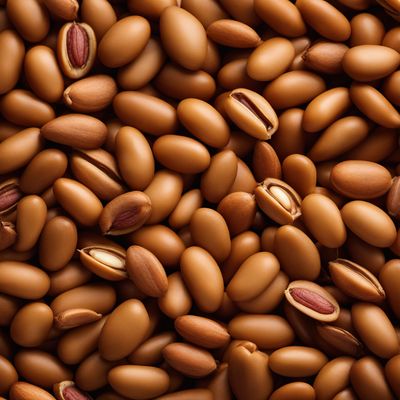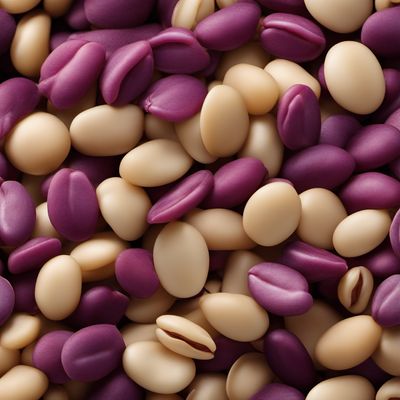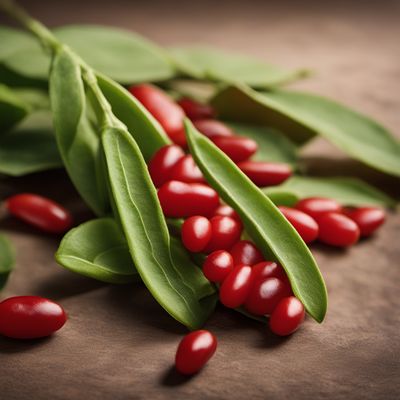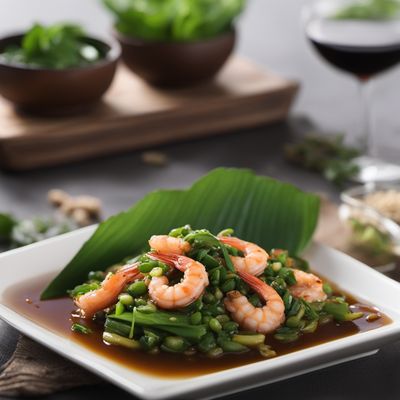
Ingredient
Mung beans (without pods)
The Mighty Mung: Unlocking the Power of Mung Beans
Mung beans are small, green legumes that are commonly used in Asian cuisines, particularly in Indian, Chinese, and Southeast Asian dishes. They have a mild, slightly sweet flavor and a tender texture when cooked. These beans are often sprouted and used in salads, stir-fries, soups, and desserts, making them a versatile ingredient in both savory and sweet preparations.
Origins and history
Mung beans have a long history and are believed to have originated in India. They have been cultivated for thousands of years and are an integral part of traditional Indian cuisine. Over time, mung beans spread to other parts of Asia, where they became popular in Chinese and Southeast Asian cooking. Today, mung beans are cultivated and consumed worldwide, appreciated for their nutritional benefits and culinary applications.
Nutritional information
Mung beans are a nutritional powerhouse, rich in protein, fiber, vitamins, and minerals. They are low in fat and calories, making them a healthy choice for those looking to maintain a balanced diet. Mung beans are also a good source of antioxidants and can contribute to overall well-being.
Allergens
May contain allergens such as legumes, and individuals with legume allergies should exercise caution when consuming mung beans. Additionally, some people may experience digestive discomfort when consuming mung beans, so it is advisable to start with small quantities and gradually increase intake.
How to select
When selecting mung beans, look for those that are plump, uniformly green, and free from any signs of discoloration or damage. Avoid beans that appear shriveled or have a musty odor. Opt for organic or locally sourced mung beans whenever possible to support sustainable farming practices.
Storage recommendations
To maintain the freshness of mung beans, store them in a cool, dry place in an airtight container. Avoid exposure to moisture, as it can cause the beans to spoil or develop mold. Proper storage can help extend their shelf life for several months.
How to produce
Mung beans can be easily grown at home by sprouting them in a jar or tray. Simply soak the beans overnight, drain the water, and rinse them twice a day until sprouts appear. This process takes around 2-4 days. Once sprouted, mung beans can be used in salads, stir-fries, or blended into smoothies for added nutrition.
Preparation tips
Before using mung beans, rinse them thoroughly under cold water to remove any dirt or debris. If cooking, soak the beans for a few hours or overnight to reduce cooking time. Mung beans can be boiled, steamed, stir-fried, or added to soups and stews. They can also be ground into flour or sprouted for use in salads and sandwiches. Experiment with different spices and seasonings to enhance their flavor.
Substitutions
Lentils, adzuki beans, or black-eyed peas can be used as substitutes for mung beans in recipes. While they may not have the exact same taste and texture, they offer similar nutritional benefits and can be used interchangeably in many dishes.
Culinary uses
Mung beans are widely used in Asian cuisines, particularly in Indian dal, Chinese stir-fries, and Southeast Asian desserts. They are commonly used to make dal, a traditional Indian lentil soup, as well as sprouts for salads and sandwiches. Mung bean paste is also a popular filling in Chinese mooncakes and other pastries. These beans can be incorporated into curries, stews, and even desserts, showcasing their versatility in both savory and sweet applications.
Availability
Mung beans are cultivated and consumed in various regions around the world, including India, China, Southeast Asia, and parts of Africa. They are also available in many Western countries, particularly in specialty grocery stores and health food markets.
More ingredients from this category » Browse all

Jack beans (without pods)
The Versatile Legume: Unveiling the Wonders of Jack Beans

Borlotti or other common beans (without pods)
The Versatile Legume: Borlotti Beans

Black eyed peas (without pods)
The Versatile Legume: Black Eyed Peas

Monantha vetches (without pods)
The Versatile Monantha Vetches

Lablab beans (without pods)
The Protein Powerhouse

Black gram (fresh seeds)
The Nutritional Powerhouse: Fresh Black Gram Seeds

Runner beans (without pods)
The Vibrant Green Delight: Unveiling the World of Runner Beans

Broad beans (without pods)
The Versatile Legume

Rice beans (without pods)
The Versatile Rice Bean

Guar beans (without pods)
Versatile Legume Powerhouse

Ervils (without pods)
Delicate Green Gems

Tepary bean (fresh seeds)
The Resilient Legume
Recipes using Mung beans (without pods)

Chè Ba Màu - Vietnamese Three Color Dessert
Rainbow Delight: A Vibrant Vietnamese Dessert

Vietnamese-style Feijoada
Feijoada with a Vietnamese Twist: A Fusion of Flavors

Bakpia Pathok - Indonesian Sweet Mung Bean Pastry
Delightful Mung Bean Surprise: Bakpia Pathok Recipe

Putian-style Abará
Savory Steamed Bean Dumplings: A Taste of Putian